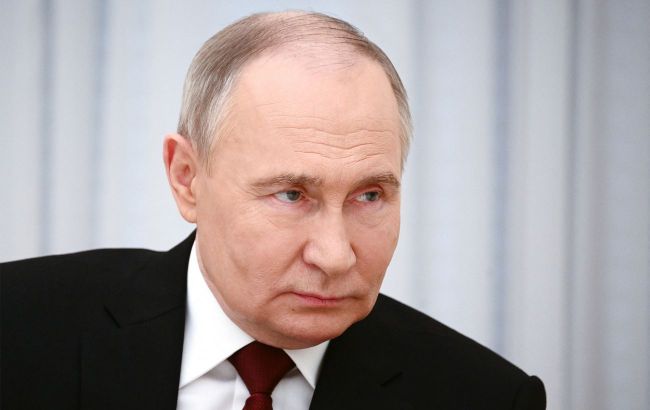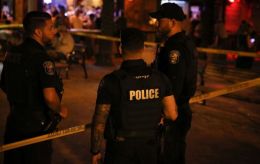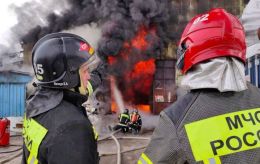From missiles to drones: Understanding Putin’s shift in attack methods
 Photo: Russian President Vladimir Putin (Getty Images)
Photo: Russian President Vladimir Putin (Getty Images)
Russia is changing its approach to air attacks on Ukraine, concentrating strikes on specific locations. The enemy mostly carries out mass attacks using drones, while the use of large numbers of missiles is no longer as frequent. There are several reasons for this.
RBC-Ukraine asked former Deputy Chief of the General Staff of the Armed Forces of Ukraine and military expert Ihor Romanenko about what the enemy is planning and how this has affected the mass attacks.
Key questions
-
Why does Russia strike with Shahed drones selectively?
-
Have the massive missile strikes changed?
-
What’s wrong with the Oreshnik and Yars systems, and how does Russia use them for intimidation?
-
What role do Putin’s talks with Trump play in all this?
Drones instead of missiles. How have the enemy’s attack tactics changed?
According to the expert, the changes in the enemy’s air strike tactics involving missiles and UAVs are as follows. Whereas previously the Russian forces spread their air attack means across the territory of Ukraine, recently, for greater effectiveness, they have been concentrating on one or two to three specific locations, depending on how many assets they have accumulated.
"For example, 20-30 Shaheds strike a single populated area, while the rest are distributed across the entire territory. This probably started with Kropyvnytskyi (referring to the attack on March 20, 2025, when the enemy launched dozens of Shaheds at the city)," explains Romanenko.
He notes that after this, Russian forces began to repeat this tactic by attacking Dnipro, Zaporizhzhia, Kyiv, and others. At the same time, the enemy also somewhat shifted its attention to terrorizing the western regions of Ukraine with drones.
Mass missile attacks are decreasing. Is Russia stockpiling and playing the 'peace' card before Trump?
However, the question remains why Russian forces have been launching large-scale missile strikes less frequently. As is known, during massive bombardments, the enemy involves strategic aviation among other assets. The expert points out that missiles are more powerful weapons that the enemy needs to stockpile.
"Lately, Putin has been presenting himself as a ‘peacemaker,’ claiming they are moving towards ‘peace.’ But all of this is a fabrication, because we see that mass drone strikes, particularly with Shaheds, are continuing and even increasing in number. Perhaps the enemy is not adding as many missiles to these attacks, but they are preparing reserves for addressing other issues," says Romanenko.
According to the expert, the enemy has recently used large-scale missile attacks less often, partly due to financial and economic factors. But there is also another reason.

Photo: During Russia’s mass strikes, missiles from strategic aviation are used, including Tu-95MS (Russian media)
"If Putin is negotiating with Trump, then it would be illogical to carry out a (mass missile — ed.) strike beforehand. Because Putin convinced Trump that he is ‘for peace,’ while ‘the Ukrainians don’t surrender, but they should have long ago.’ Well, more or less that’s how he justified his actions," Romanenko notes.
He explains that if, during these negotiations between the US president and the Russian President, Russia had decided to launch powerful missile strikes on Ukraine, the Ukrainian side would have been the first to point this out to Trump.
"After all, he was asking our president what’s going on. So in the event of a massive missile attack, they would have told Trump: What kind of talks can there be if the Russians are doing this?" the interlocutor gives as an example.
Therefore, according to the expert, the decision to carry out strikes both on the ground and in the air is influenced by political and diplomatic factors that are currently in play.
Oreshnik and Yars — for intimidation. What problems have the Russians encountered with their launches?
From time to time, Russia resorts to intimidation with the Oreshnik — a medium-range ballistic missile that can carry a nuclear warhead. As is known, the first strike, which occurred on November 21, was against Dnipro, but that missile did not have a warhead.
"The enemy made one launch, but the second one did not happen; it was unsuccessful. The enemy uses the Oreshnik to intimidate our citizens and to demonstrate to other countries that this weapon exists," Romanenko believes.
He points out that since the Oreshnik is experimentally assembled like a kit, Russia has problems with it.
"They launched the first missile without a conventional warhead at all, not to mention a nuclear one. This is because of the high speeds and temperatures involved, and if there were a warhead, it could have detonated before reaching the target. The second attempt to launch the Oreshnik was unsuccessful," the interlocutor explained.
%20_%D0%AF%D1%80%D1%81_%20%D1%81%20%D0%BA%D0%BE%D1%81%D0%BC%D0%BE%D0%B4%D1%80%D0%BE%D0%BC%D0%B0%20%D0%9F%D0%BB%D0%B5%D1%81%D0%B5%D1%86%D0%BA%20.jpg)
Photo: In 2024, as part of strategic nuclear forces exercises, Russia conducted launches of Yars from the Plesetsk Cosmodrome (Russian media)
At the same time, the aggressor has another element of intimidation in its arsenal — the Yars. This is an intercontinental ballistic missile capable of carrying nuclear warheads. As is known, on the night of May 19, 2025, Russia intended to conduct a "training-combat launch" of this missile, but it did not happen.
"However, the launches did not take place because this project is quite immature. Although the Russians have about 30 mobile silos and Yars complexes, and around 300 missiles. Since 2022, they have attempted launches three times, and all attempts have been unsuccessful. So yes, they tried to scare, but they didn’t actually launch," the expert added.
Thus, Russian invaders use the Oreshnik and Yars rather as tools of psychological pressure on the population and leadership of Ukraine, demonstrating their presence to the world and directly to Europeans.
The last massive missile-and-drone strike on Ukraine by Russia took place on April 24, 2025. At that time, Kyiv and its region, Kharkiv and its region, Zaporizhzhia, Pavlohrad, as well as Zhytomyr, Poltava, Khmelnytskyi, and Sumy regions were targeted.
According to the calculations of the Ukrainian Air Forces, the enemy launched a total of 70 missiles and 145 drones across Ukraine during that strike. The most tragic consequences were for the Ukrainian capital, particularly in the Sviatoshynskyi district, where people were trapped under the rubble of a destroyed building.
As a result of this Russian attack in Kyiv, 13 people were killed, and more than 90 were injured. Among the victims and injured were children.
For more details, see the separate RBC-Ukraine's Flames, ruins, and cries from the rubble: Aftermath of Russia's massive strike on Ukraine material.

